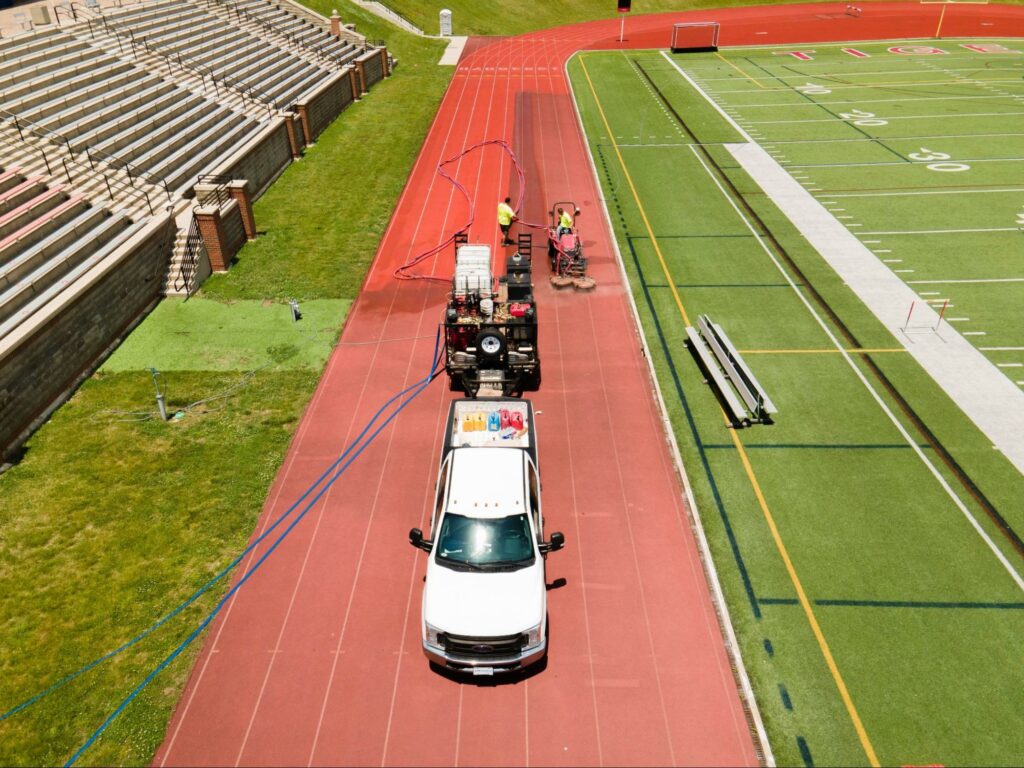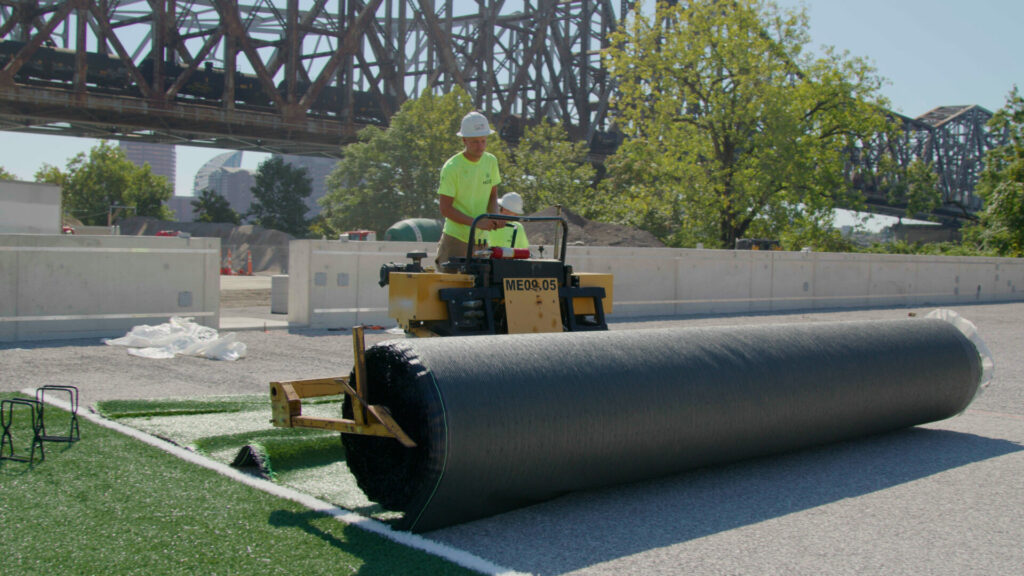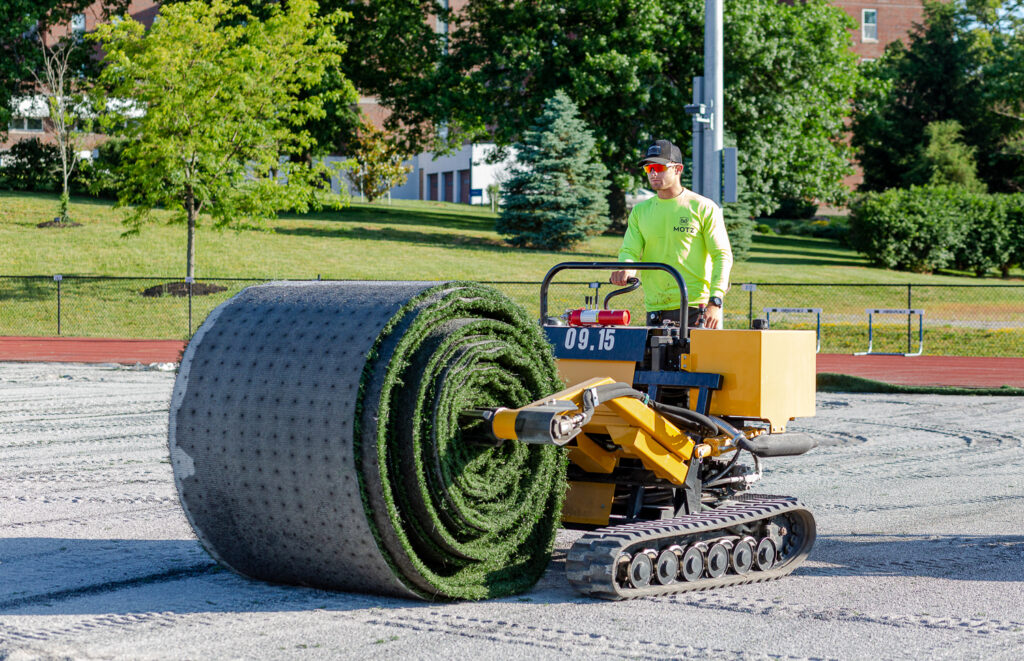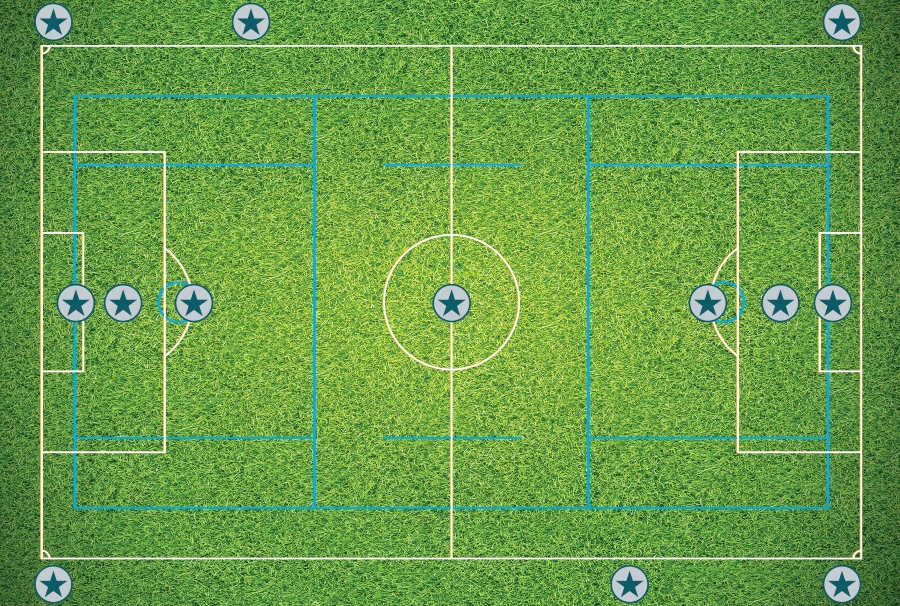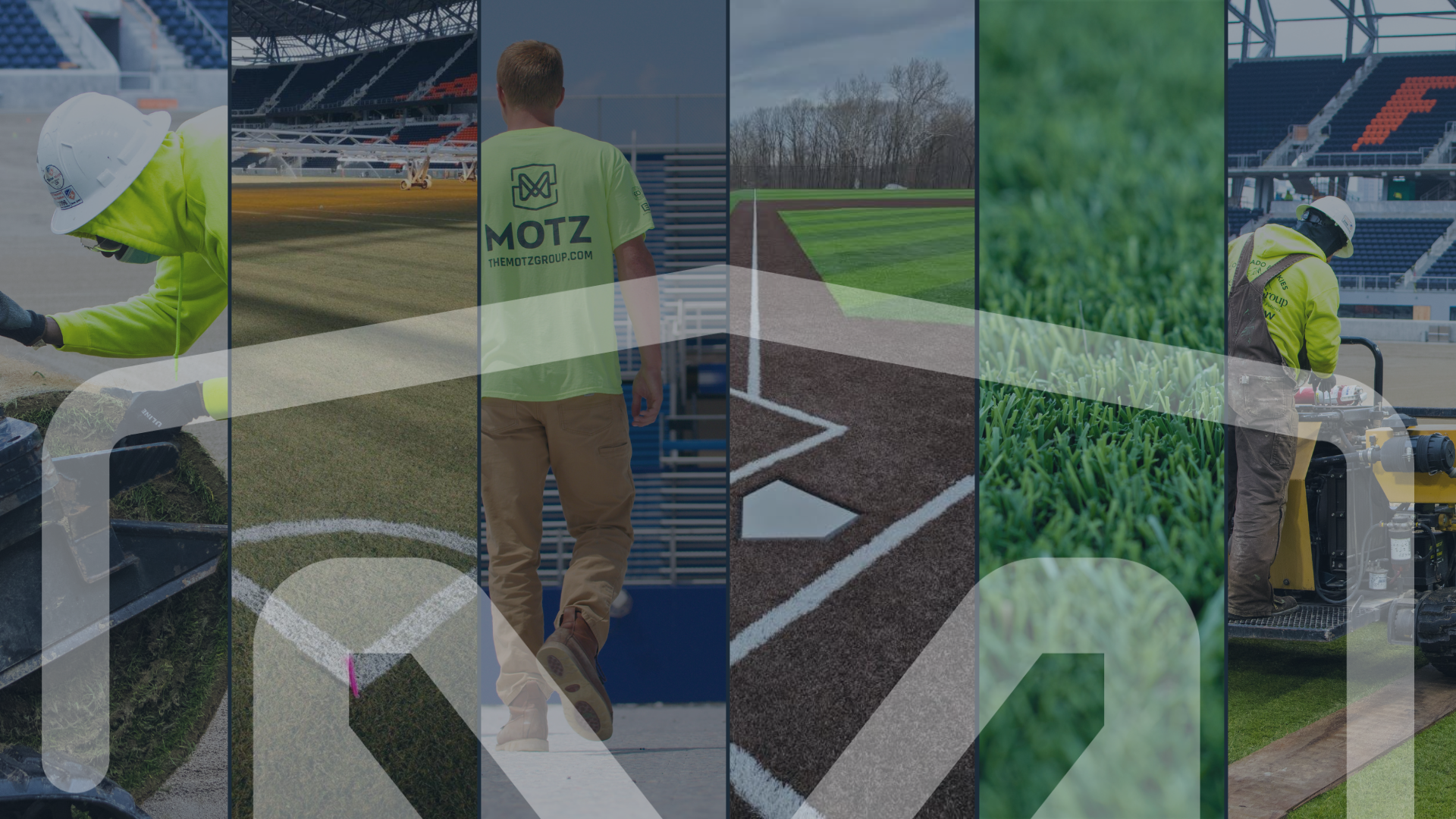
Sports Field Blog
Subscribe To Email Updates
Subscribe to our weekly newsletter and we’ll send updates straight to your inbox
Creating The Ideal Synthetic Turf Soccer Field
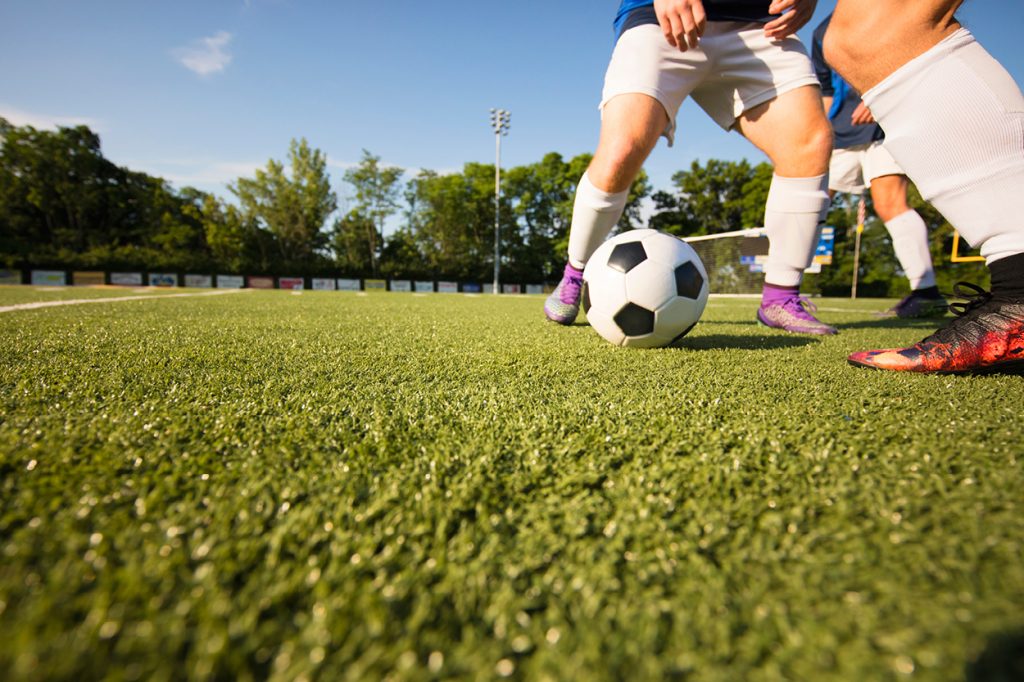
What’s the secret to creating the perfect artificial grass field for soccer? It’s in finding the perfect balance between performance and safety. Schools with the best synthetic athletic facilities know that artificial turf infill is a critical system component when it comes to longevity and performance. Consider these 5 things when creating your ideal synthetic turf soccer field
1. Playability: How Do Soccer Balls Roll And Rebound On Artificial Turf?
Soccer is a sport that demands a lot of interaction between the field surface, players’ feet, and the ball. There’s near-constant lateral movement in this sport that relies on particular field conditions. Without the right conditions, athletes aren’t able to pull off their fancy footwork. With the right field conditions, soccer players are able to accomplish the task of “putting a spin” on the ball when it’s kicked, a technique that can be tricky to pull off with synthetic turf, particularly on fields with rubber and sand turf infill due to unpredictable bounces and movements.
Many soccer players prefer the performance of natural turf infill like Safeshell, which usually creates enough traction for athletes to achieve a good, true spin. In fact, fields that mimic natural fields are generally preferred by soccer players due to the speed of the ball and overall ball-to-surface interaction of these fields.
“The three words we would use to describe our experience with Safeshell in the first six months are: it’s natural, easy and dependable.”
-Gary Esposito, Director of Operations, The Wheeler School, Soccer & Lacrosse Field
2. Maintenance Of High-Performance Synthetic Turf Soccer Fields
Fields that are home to more than one team or sport see a ton of traffic; they’re constantly being played on. Natural grass fields simply can’t live up to this level of usage, but a high-quality synthetic turf field can.
Not only can a high-quality artificial turf system endure heavy usage, it will also require very little care. When compared to natural grass soccer fields, the amount of time and resources saved with artificial turf sports field systems is astounding. Very heavily used fields will demand weekly inspections, brushing, topping off infill, and perhaps slight repair on high-wear areas from the wear and tear of near-constant playing.
For the best system performance, have your maintenance staff regularly check that infill is at the appropriate levels across the entire field. When it comes down to it, there are many ways to combine the elements of a high-performance turf system to create the perfect field surface for soccer.
3. What Is The Recommended Artificial Turf Fiber For A Soccer Field?
The ideal system looks different depending on the characteristics you want for your field. There’s no “one system fits all” approach. However, the majority of coaches and soccer players at the D1-collegiate level prefer systems made with monofilament turf fiber, or dimensional turf blades that stand upright, because of the way the ball interacts with the surface when this material is used. Slit-film turf blades with a slit at the end of each blade, creates a surface that may be too fast for the ideal performance of soccer fields. In fact, rarely are synthetic turf systems made with 100 percent monofilament fiber unless they’re soccer fields. At the very least, modern soccer fields will have a dual-fiber turf carpet.
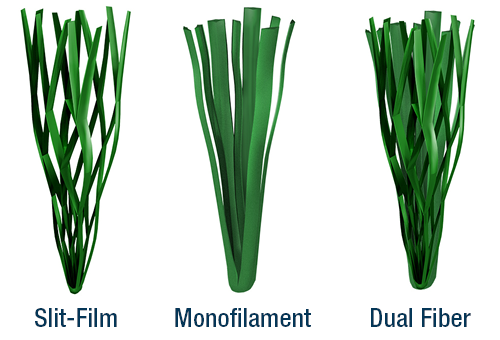
4. Recommended Synthetic Turf Infill For Soccer Fields
Luckily, inclement weather won’t affect the field performance of your artificial turf soccer field. This is especially true when a high-performance, heavier ballast turf infill like Safeshell or Envirofill is selected for the field’s turf system. Heavier ballast synthetic turf infill limits migration and minimizes flyout during kicking. Heavier synthetic turf infills also tend to stay in place during heavy rainfalls resulting in a smooth surface with predictable ball roll.
A progressive synthetic turf infill is recommended for the desired ball interaction and optimal performance of your system. Thatch can help stabilize the synthetic turf infill and improve sliding conditions. With a high-performance artificial turf infill, like Envirofill, the infill stays very level across the field creating a consistent and predictable surface. A synthetic turf infill, like Safeshell, is made from natural materials (walnut shells in Safeshell’s case). This type of artificial turf infill tends to create a field surface that more closely mimics a natural grass field.
“Our sports teams prefer Envirofill over crumb rubber, soccer especially, because it plays truer to natural grass.”
-Todd Hofferberth, Parks & Recreation Director, The Village Of Key Biscayne, Soccer
5. Performance Testing For Synthetic Turf Soccer Fields
At the end of the day, your synthetic turf soccer field achieves the gold standard of soccer fields if it can generate results that match FIFA standards, which accounts for performance measures such as rotational resistance, safety, and traction. Using FIFA standards as a benchmark for your synthetic turf soccer field conditions lowers the risk of injury. Key performance tests for synthetic turf soccer systems are:
Rotational Resistance
Surface traction is measured in Newton meters (Nm) with a weighted device attached to athletes’ cleats. A higher score indicates higher traction while a lower score indicates low traction. With a higher traction, you might not get a natural cleat slide, but with a lower traction, there is a higher chance of slippage.
Ball Roll
An incline device is positioned at specified heights to evaluate the consistency, direction and length of soccer ball rolls on the field. Ball roll affects the play of the game. As a player, you want to know the ball will roll similar to playing on a natural field and consistent from playing on one synthetic field such as your own, to playing on another synthetic field, such as your competitors. The ideal range is between 4-10 meters.
Vertical Ball Rebound
Balls are dropped from a specified height and their bounce is measured. The ideal range is between 0.6 – 1 meter. This test is important for a player to understand how they should play the ball. It allows them to gauge if they should go after the ball or hang back. It is also important for corner kicks and cross passes.
| Test | Rotational Resistance | Ball Roll | Vertical Ball Rebound |
|---|---|---|---|
| SCORE RANGE (LAB) | 27 to 48 Nm | 4 to 10 meters | 0.6 to 1 meter |
| SCORE RANGE (FIELD) | 25 to 50 Nm | 4 to 10 meters | 0.6 to 1 meter |
Get More Information On Creating The Best Artificial Turf Soccer Field
You’re always encouraged to reach out to our highly qualified team of synthetic turf sports field experts with questions. We’d love to help you get the ball rolling on creating your best synthetic turf soccer field!
Similar Blogs
